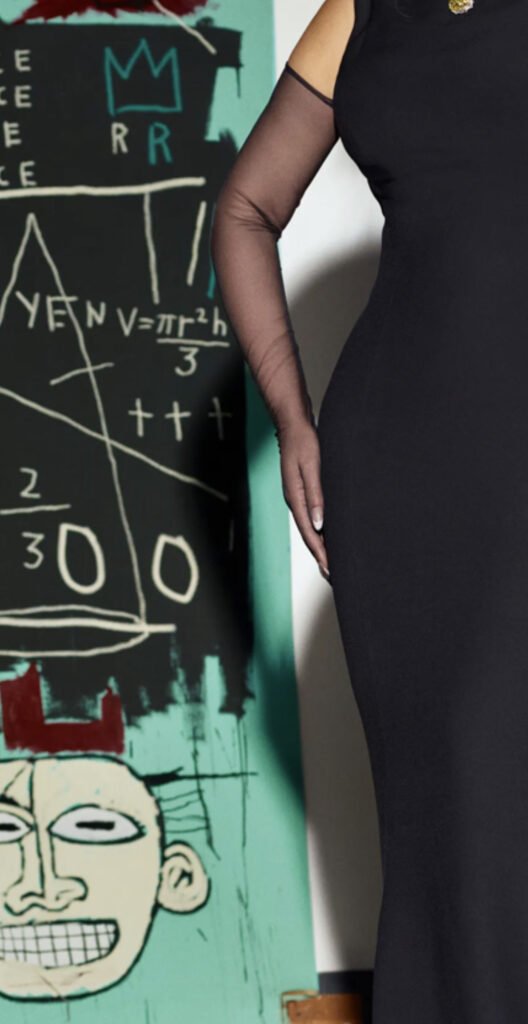A few months back, I began this random, out of the blue obsession with vintage Tiffany & Co. Jewelry. Not to buy, just to hunt. It’s a strange one, as I’ve never owned one of their pieces, nor gone into a T&C store, nor cared much about the brand. But something got to me and I wanted to hunt.
Then a few days ago, I heard that Beyoncé and Jay-Z were the new T&C spokespeople, and I rushed to learn more. I’m slightly addicted to advertising – when I see something that stands out, I just can’t get enough of it. I crawl into the minds of the creators, hunting and looking for how and why and what and where. And that’s what I’ve spent my long weekend doing.
It’s quite frankly the best print ad I’ve seen in years. I don’t know what captures me more – Beyoncé’s incredible figure, the way Jay-Z is admiring her like she’s the best piece of music ever heard, or the Basquiat striking us from the background. Holy smokes, that came out of nowhere. What an incredible juxtaposition: the color of his painting, their expressions, the black and white of everything else in the scene. It’s fantastic, and I can’t think of a stronger, more powerful couple to represent this brand.
Like any good advertising, you either love it or you hate it. And the haters often help bring more attention to the ad. That’s the fun balance: what will upset someone slightly – just enough to make this reach a new audience? Just enough to bring attention without a full-on battle? Just enough to make someone question why they hate it, or why they love it, and why that even matters.
That’s the importance of art. To cause us to pause, and to question. It happens in nature, too, but we rarely if ever get pissed at nature. We can get upset, angry, pissed, at a piece of art. And that right there – is phenomenal. If it does not cause us to pause or question why, then we’re moving too fast, then we’re not taking a moment to understand feelings or pain or hunger or the human condition. Then we’re not really looking.
Advertising, to me, is art. A great campaign should make you stop and think. It should bring tears or laughter or awe to your eyes. Otherwise, what is the point? If we can’t get close to the human emotion, why even bother? Why sell something that doesn’t produce awe or beauty? When creating something, how do we get to that balance? How do we make a subtle point and hope that people are effected by it? How do we get close to the edge without falling off? Because if we’re not close to falling off, we’re not really living or creating or doing. We’re just making, for ourselves, in this strange little protected place. We’re not really pushing.
As creators, we need to be pushing.

